Barely a month after Department of Public Works & Highays Secretary Hermogenes Ebdane, Jr. endorsed to President Gloria Macapagal Arroyo the release of an additional P200 million for its completion, work has resumed on the long delayed Cagayan de Oro International Trade and Convention Center. Latest photos of the site showed the roof trusses have been completed with quite a handful of workers seen.
The project which is located in Taguanao, Indahag, Cagayan de Oro City is the first ever world class Trade and Convention Center being constructed in Mindanao. It was implemented utilizing the Design-Construct Scheme and is ideal for national, international and trade exhibits, as well as seminars and conventions.
Boasting of a 7,700 seating capacity, the Convention Center has several amenities like a multi-purpose hall that could accommodate 1,000 guests, a convertible indoor playing court, an exhibit area for 1,500 viewing guests with demountable partition for flexibility of expansion, 12 function rooms for 1,000 guests, 4 clubrooms with lockers and showers, cafeteria with approximately 100 seating capacity, and an administrative office, storage room and other support facilities.
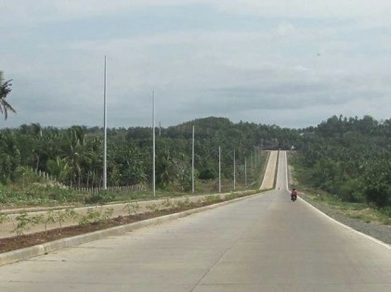 With the near-completion of the Laguindingan International Airport (LIA) and with the Mindanao Railway System (MRS) already in the drawing boards, business and trade are expected to increase in this part of Mindanao, which is why a Mindanawon congressman yesterday urged the government to draw up a comprehensive master plan for the revitalized Cagayan-Iligan Industrial Corridor (CIIC). “If we really want investors to pour in their millions and even billions of pesos in the CIIC, then we have to start developing a comprehensive master plan for it,” said Rep. Ariel Caringal Hernandez of Anak Mindanao party-list.
Noting that the international airport in nearby Laguindingan town is targeted to open on January 17, 2012, and the Saudi Fund for Development’s expression of willingness to fund the MRS, Hernandez said that this will be best complemented by a comprehensive master plan for the CIIC. The completion and opening of the airport in the municipality of Laguindingan will open the doors for investors and tourists to our shores. Thus, there is a great need to come up with a comprehensive master plan for the CIIC to really entice investors to establish their businesses here,” Hernandez said.
The CIIC, which lies within the provinces of Lanao del Norte and Misamis Oriental and within the regions of Northern Mindanao and Soccsksargen, is a 187-kilometer stretch of mainly coastal strip facing the bays of Iligan and Macajalar and has a total land area of 3,227 square km. The MRS is made up of a network of railways linking Cagayan de Oro City to Iligan City up to
Zamboanga City, and to the Agusan and Surigao provinces. It also has extensions to the cities of Davao and General Santos.
Construction of the first phase of the MRS project covering the Cagayan de Oro-Iligan stretch is being prioritized because it is an industrial and economic corridor. Rep.Rufus Rodriguez, who filed House Bill 1855 in 2008 creating the Mindanao Railways Corp., said the MRS “will not only solve traffic congestion in the city [of Cagayan de Oro], especially with the opening of the LIA and other urban centers of Mindanao, but will also boost tourism and business along its route. This will be a more efficient, cost-effective and fast mode of transportation linking all major cities and towns of Mindanao.”
The MRS will pass through the CIIC, which covers 19 municipalities: Claveria, Jasaan, Villanueva, Tagoloan, Opol, El Salvador, Alubijid, Laguindingan, Gitagum, Libertad, Initao, Naawan, Manticao and Lugait of Misamis Oriental; and Linamon, Kauswagan, Bacolod, Maigo and Kolambugan of Lanao del Norte. The CIIC has been designed as a major industrial, processing and trade zone, with the cities of Iligan and Cagayan de Oro as centers.
It is also considered as one of the investment destinations in Mindanao, with the following development roles: transshipment hub of Mindanao due to its proximity to domestic markets such as Cebu and Manila with the safest and shortest sea route; one of the major agri-industrial centers in Mindanao; trade and services center in Northern Mindanao; and power provider in Mindanao by harnessing the power of Maria Cristina Falls.
With these roles, the CIIC is an ideal location for investments in metals (engineering and metal works); construction and infrastructure; oleo chemicals and other basic chemicals; and agriculture, aquaculture and agro-forestry. Hernandez noted that while the CIIC has been touted as one of the investment destinations in Mindanao for more than a decade now, it has not really taken off and very few investors have actually established their businesses in the area because of the lack of a comprehensive master plan.
“The CIIC, despite its considerable potential for being the investment hub in Mindanao, has very limited growth in the past decade because of a lack of a master development plan. As such, an integrated comprehensive master plan or program aimed specifically at maximizing its fourfold roles is badly needed and should be drawn up as soon as possible, especially so that we can present this to the incoming president,” he said.
Written by Bong D. Fabe / Correspondent – Business Mirror
The completion of the more than P1.2 billion “coastal super highway” would be given priority among congressional projects in Cagayan de Oro City this year in order to decongest traffic in the city’s downtown district. Rep. Rufus Rodriguez, (2nd District, Cagayan de Oro City), said that reclamation of the coastal lines in Lapasan has gained headway and some 2-kilometer has already been reclaimed since the project’s phase 1 started early this year.
He said the phase 1 of the coastal highways starts at the Macabalan Port Area to settle at Gusa in the city’s east coast. The Department of Public Works and Highway has released some P600 million to initially start the super coastal highways that would traverse through Cagayan de Oro City’s north-east coast barangays Macabalan, Lapasan, Gusa, Agusan and Puerto. “It is a four-lane highway that would primarily be used for prime mover trucks, 24-footer cargo trucks and other trucking facilities that would certainly decongest traffic in downtown Cagayan de Oro,” Rodriguez, re-elected to the 15th Congress this year, said.
But it would be up to the City Council of Cagayan de Oro to legislate an ordinance requiring all trucks and prime mover equipment to pass through the super highway route instead of passing through the city’s congested downtown areas. He said the coastal highway will connect the newly completed P360-million bridged that connects Barangay Puntod and Kauswagan.
The second phase of the coastal highways would start from Gusa to Puerto, or roughly a total length of 10-kilometer, Rodriguez added. According to Rodriguez, demolition of shanties and houses along the shorelines would be minimal since highway engineers are seeing to it that these houses shall be spared from demolition.
“At any rate, owners of shanties and houses that would inevitably be demolished to give way to the construction of the coastal highways will be justly compensated,” Rodriguez added. When completed, the coastal super highway would perk up economic activity in this port capital city of Cagayan de Oro City.
The “super coastal highways” would also become one of the city’s major coastal attraction likened to Cebu City’s south road project which ran across Barangays Bato, Pasil, Alaska, Mambaling, Pardo and toward Talisay City.
|
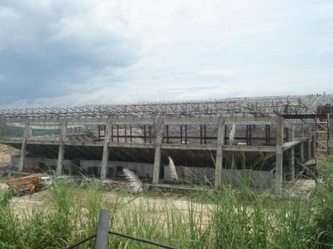

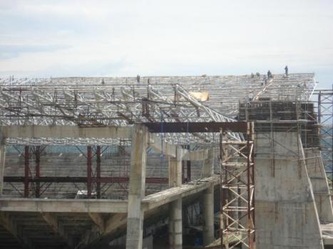

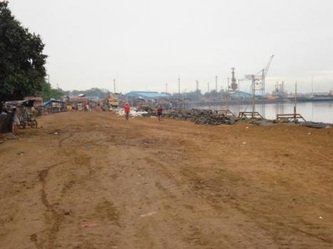
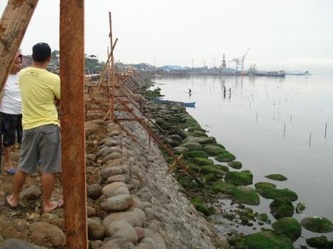

 RSS Feed
RSS Feed